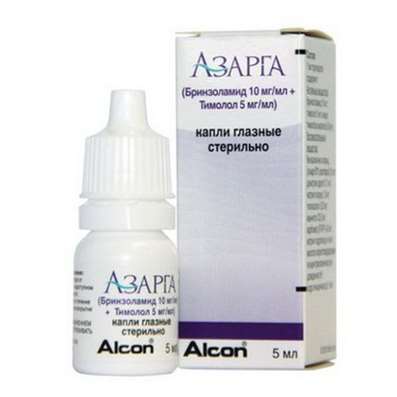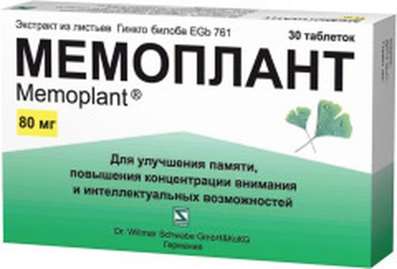Instruction for use: Doxepin
I want this, give me price
Latin name: Benzocainum (genus. Benzocaini)
Chemical name
4-Aminobenzoic acid ethyl ester
Gross formula
C9H11NO2
Pharmacological group:
Local Anesthetics
The nosological classification (ICD-10)
H65 Pulmonary otitis media: Inflammation of the middle ear; Otitis media is allergic
H66 Purulent and unspecified otitis media: Bacterial ear infections; Inflammation of the middle ear; Infections of ENT organs; Infectious-inflammatory disease of ENT organs; Infectious and inflammatory diseases of ENT organs; Infectious-inflammatory diseases of the ear; Infectious diseases of ENT organs with severe pain syndrome; Ear infection; Otitis media is infectious; Persistent middle ear inflammation in children; Ear pain with otitis
H92.0 Otalgia: Pain in the region of the external auditory canal; Ear pain; Ear pain with otitis
I84 Hemorrhoids: Painful hemorrhoidal nodes;External hemorrhoids; Internal hemorrhoids;Inflammation of hemorrhoids; Exacerbation of hemorrhoids; Chronic bleeding hemorrhoids; Acute hemorrhoidal attack
K20 Esophagitis: Infections of the digestive tract; Acute erosion of the esophagus; Esophagitis erosive; Erosive esophagitis; Infectious Disease of the GI tract
K25 Stomach ulcer: Helicobacter pylori; Pain syndrome with peptic ulcer disease; Pain syndrome with peptic ulcer of stomach and duodenum; Inflammation of the gastric mucosa; Inflammation of the mucous membrane of the gastrointestinal tract; Benign ulcer of the stomach; Disease of the stomach and duodenum, associated with Helicobacter pylori; Exacerbation of gastroduodenitis against ulcer disease; Exacerbation of peptic ulcer; Exacerbation of gastric ulcer; Organic Gastrointestinal Disease; Peptic ulcer of the stomach and duodenum; Postoperative Stomach Ulcer; Recovering ulcers; Symptomatic Stomach Ulcers Symptomatic ulcers of the stomach and duodenum; Chronic inflammatory disease of the upper GI tract associated with Helicobacter pylori; Eradication of Helicobacter pylori; Erotic-ulcerative lesions of the stomach; Erosive lesions of the stomach; Erosion of the gastric mucosa; Peptic Ulcer; Stomach ulcer; Ulcerative lesions of the stomach; Helicobacteriosis
K26 Ulcer of duodenum: Pain syndrome with duodenal ulcer; Pain syndrome with peptic ulcer of stomach and duodenum; Disease of the stomach and duodenum, associated with Helicobacter pylori; Exacerbation of peptic ulcer; Exacerbation of peptic ulcer of the duodenum; Peptic ulcer of the stomach and duodenum; Recurrence of duodenal ulcer; Symptomatic ulcers of the stomach and duodenum; Eradication of Helicobacter pylori; Erotic-ulcerative lesions of the duodenum; Erosion-ulcerative duodenal lesions associated with Helicobacter pylori; Erosive lesions of the duodenum; Peptic ulcer disease of the duodenum; Ulcerative duodenal lesions
K60 Crack and fistula of anus and rectum area: Anal fissure; Acute anal fissure; Paraproctitis chronic; Perianal fissure; Surface fissure of anus; Fistulas of the rectum; Rectum crack; Anal cracks; Cracks in the anus; Rectal cracks; Chronic anal fissures Chronic periproctitis; Watchdog
K94 * Diagnosis of digestive tract diseases: Hepatic and splenic scans; Visualization of the liver by invasive methods; Isotope scintigrams of the liver; Laparocentesis; Ultrasound examination of the liver; Magnetic resonance imaging of the liver; Computed tomography of the liver; Esophageal Manometry; Anoscopy; Visualization of the biliary tract; Ultrasonic visualization of the liver; Gastroscopy; Intestinal degassing before diagnostic tests; Degassing of the intestine before X-ray examination; Gastrointestinal diagnostics; Diagnosis of bleeding from the small intestine; Diagnosis of focal pathology of the liver; Diagnosis of secretory ability and acid-forming function of the stomach; Diagnostic intervention on the large intestine; Duodenal sounding; Duodenoscopy; Instrumental studies of the abdominal cavity organs; Intraoperative cholangiography; Irrigoscopy; Examination of gastric secretion; Gastrointestinal; Study of acid-forming function of the stomach; Study of the secretory function of the stomach; Colonoscopy; Controlling the effectiveness of lithotripsy; Determination of the degree of hypersecretion in duodenal ulcer; Preparation for diagnostic tests; Preparation for X-ray and instrumental methods of abdominal examination; Preparation for X-ray and ultrasound examination of abdominal organs; Preparation for X-ray or endoscopic examination of the digestive tract; Preparation for X-ray examination of the gastrointestinal tract with contrasting; Preparation for roentgenological examination of gastrointestinal tract with application of barium; Preparation for X-ray examination and ultrasound of the abdominal cavity organs; Preparation for X-ray examination or ultrasound of the abdominal cavity organs; Preparation for ultrasound and X-ray examination of the abdominal cavity organs; Preparation for endoscopic examination of the lower parts of the colon; Preparation for endoscopic or roentgenologic examination of the lower intestine; Preparation of the lower GI tract for endoscopy; Preparation of the colon for instrumental and radiographic examinations; Preparation of the colon for X-ray and endoscopy; Recto-Humanoscopy; Rectoscopy; Radiography of the digestive tract; X-ray diagnosis of achalasia of the esophagus; X-ray diagnosis of diseases of the digestive tract; X-ray diagnostics of the digestive tract; Radiocontrast examination of bile ducts Radiocontrast study of the digestive tract; Radiographic diagnosis of gastrointestinal tract; X-ray examinations of the digestive tract; X-ray examination of the duodenum and gallbladder; X-ray examination of the stomach; X-ray examination of the biliary tract and gallbladder; X-ray examination of the digestive tract; X-ray examination of the esophagus; Retrograde cholangiopancreatography; Retrograde endoscopic pancreatocholangiorentgenography; Sonography of the gastrointestinal tract; Splenoportography; Ultrasound of the abdominal cavity organs; Functional X-ray diagnosis in diseases of the stomach; Functional X-ray diagnosis in diseases of the intestine; Cholangiography; Cholangiography in cholelithiasis; Cholangiopancreatography; Cholecystography; Esophagoscopy; Endoscopic retrograde pancreatography; Endoscopic retrograde cholangiopancreatography; Endoscopic interventions; Endoscopic examination of the digestive system; Endoscopic examination of the lower parts of the large intestine; Endoscopic examination of the digestive tract; Endoscopy; ERCPR; Panendoscopy
L29 Itching: Itching with partial obstruction of the biliary tract; Dermatitis itchy; Dermatosis with persistent itching; Other itching dermatoses; Itching dermatoses; Itching allergic dermatosis; Itching dermatitis; Itching dermatosis; Itchy skin; Excruciating itching; Severe itching; Endogenous itching; Skin itching with dermatosis; Restricted itchy dermatitis; Itching of the skin; Itchy scalp; Itching eczema
L50 Urticaria: Idiopathic chronic urticarial; Injury Urticaria; Chronic urticarial; Hives of the newborn
R10.1 Pain localized in the upper abdomen: Pain in the stomach; Pain in the stomach; Pain in the upper abdomen; Pain in the epigastric region; Epigastric pain; Pain syndrome in acute pancreatitis; Pain in the stomach; Pain in epigastrium; Pain with acute gastritis with high acidity; Pain with chronic gastritis with high acidity; Gastralgia; Discomfort and epigastric pain; Gastric discomfort; Feeling of discomfort in the epigastric region; Severity in the epigastric region; Epigastric pain; Pain in the epigastric region; Pain syndrome in pancreatitis; Discomfort and pain in the epigastric region
Z01.1 Examination of ears and hearing: Otoscopy
Z01.2 Dental Examination: Extirpation of the tooth; Anesthesia of mucous membranes; Stomatological intervention
Z01.4 Gynecological examination (general) (routine): Small gynecological manipulations
Z01.8 Other specified special examination: Anesthesia of mucous membranes; Preoperative examination
CAS code
94-09-7
Characteristics of the substance Benzocaine
White crystalline powder odorless, slightly bitter taste; causes a feeling of numbness in the tongue. 1 g of benzocaine is soluble in 2500 ml of water, 5 ml of ethanol, 4 ml of ether, 2 ml of chloroform, in fatty oils (30 to 50 ml), in dilute hydrochloric acid. pKa 2.5. Molecular weight: 165.19.
Pharmacology
Pharmacological action - local anesthetic.
Reduces the permeability of the cell membrane for Na + ions, displaces Ca2 + from receptors located on the inner surface of the membrane, blocks the occurrence and conduct of nerve impulses. For local and oral use, absorption is minimal. When applied to mucous membranes, the effect develops within 1 minute and lasts 15-20 minutes.
Long-term studies in animals and humans to evaluate potential carcinogenicity and mutagenicity, as well as effects on fertility, have not been carried out.
Application of Benzocaine
Inside: gastralgia, esophagitis, peptic ulcer of the stomach and duodenum. Locally: acute inflammation of the middle ear, pain in the region of the external auditory canal, urticaria, skin diseases accompanied by itching; perianal cracks, hemorrhoids. Performing diagnostic manipulations on the mucous membranes (gastroscopy, rectoscopy, otoscopy, urethroscopy, gynecological procedures). In dentistry: superficial anesthesia.
Contraindications
Hypersensitivity.
Restrictions on the use
Children's age (up to 2 years).
Application in pregnancy and lactation
In pregnancy, use is only possible if necessary (it is not known whether benzocaine exerts harmful embryonic effects and effects on reproductive capacity).
The action category for fetus by FDA is C.
With caution in the period of breastfeeding (it is not known whether benzocaine penetrates into breast milk).
Side effects of Benzocaine
Contact dermatitis and / or hypersensitivity reactions (burning, tingling, itching, erythema, rash, urticaria, edema), persistent decrease in sensitivity at the site of application; rarely, with excessive use - methemoglobinemia (especially in infants and young children).
Interaction
Cholinesterase inhibitors inhibit the metabolism of benzocaine.
Overdose
Symptoms: methemoglobinemia, dyspnea, cyanosis, dizziness.
Treatment: symptomatic and / or injection of methylene blue.
Routes of administration
Inside, externally.

 Cart
Cart





